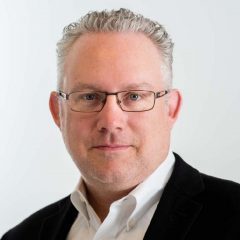Make 2024 the year you let strategy lead your planning
I made a big mistake at the start of the year.
I began planning for my company’s year by asking myself, "What do I need to do this year?" You might think that's a normal question, but it’s really a muscle memory from the crazy days of 2020, early in the COVID-19 pandemic, when we marketers threw out our playbooks and made seismic changes overnight just to keep our businesses going.
We revamped plans to cope with closures, shortages, and uncertainty. We revised how we communicated with our customers and changed our revenue expectations. There was no time to plot strategy. Instead, we did what we had to do to get stuff done. We were like gymnastics legend Simone Biles, doing turns, flips, and pivots, and sticking the landing every time.
That "get stuff done" mentality got us through three wild years, but it also created a new tactics-first muscle memory. We can’t afford to keep tossing out the program and doing whatever we can think of to achieve our goals.
Why you need to start with the plan
If you know me at all, through conferences and webinars, my Only Influencers posts, or other writings, you know my mantra is "Strategy first, tactics second." What’s the difference? Strategy is the "why" that you need to know before you do anything. Tactics are the “how,” what you’ll do to achieve your strategy.
The plan is crucial because it defines how you will get more revenue, engage more customers, hit your goals, and get through your crunch times, whether that’s the Q4 holidays or some other time in the business year.
That’s why my question – "What do I need to do this year?" – was wrong. I should have asked, "What's my strategy to achieve my goals, and what tactics will I use to carry out that strategy?"
Take generative AI. Deciding to use GenAI is not a strategy, especially if you adopt it because everybody else is doing it and you worry that you’ll fall behind if you don’t. That’s the tactics-first approach.
This is the strategy-first approach:
- Your goal: Make more money with your email program.
- Your strategy: Create more engaging email campaigns that will lead to more conversions and more revenue.
- Your tactic (one of them, anyway): Use generative AI to improve your campaign briefs, content, and testing programs to create those better campaigns.
Without that strategic plan, you can only hope GenAI will get you the results you need so you can hit your numbers, get a bigger share of the marketing budget, help you keep your job or earn a promotion.
But, as marketing legend and OI member Loren McDonald says, “Hope is not a strategy.”
3 ways to develop a strategy-first approach
Let's talk about how to create that plan and to step back and understand why tactics alone will not get you to the goal. Here are three seemingly unrelated steps you can take now to help you develop a strategic outlook.
1. Surround yourself with conversations that focus on the "why" before the "how."
I have to give mad props to OI's General Manager Jeanne Jennings. She has done a phenomenal job of energizing and orchestrating OI since founder Bill McCloskey retired in 2019. One of her big successes is the OI Live calls at noon ET every Thursday and open to any OI member.
We discuss specific topics presented by OI blog writers or decided by the group. I often get calls scheduled for that time, but I attend whenever I can and learn something from every speaker.
It is a joy to listen to people talk strategy and share their perspectives on important issues. We'll often discuss strategies that look beyond loading the next campaign or troubleshooting an automation. Because what we discuss on OI Live stays there, we can speak with candor. That creates authentic, helpful discussions.
Hearing what others are doing with their work, their companies, and their clients often gives me great fodder I can take back for my own work.
If you're an OI member, drop in and join the conversation. Watch your inbox for the weekly email from Jeanne with the Zoom link.
2. Do the work for real.
I always begin the company year by preparing and presenting the annual plan to my team of 27 people. We go over what we accomplished from the previous year's plan and then look ahead to see what challenges await us in the coming year.
This exercise in planning takes a couple of weeks to pull the information together and write the plan. It's not a list of tactics. Instead, I present our vision, mission, and goals, what we'll put our shoulders against, and which pieces of the plan we need to move around to accomplish that.
Yes, pulling this presentation deck together takes work. But when you're presenting your plan, whether in person or on an all-hands call, everyone can see the plan and understand what's at stake.
Where is your industry headed? What are your customers asking for? What other demands will your company face, and how will you meet those demands? Your plan can inspire your team and give them the confidence to know what you expect of them and how they'll get there.
I presented the plan to my team the day before I drafted this column, and it was a refreshing experience to walk everyone through it.
Your plan will be different from mine. But it should be a holistic view of what you're doing and how you're doing it. You don't merely say, "I want to implement these programs." Instead, go for a higher level and include your vision for the entire year.
Your plan doesn't have to be eloquent. But you must define your aims. It all starts with a blank PowerPoint deck that you then fill up with ideas for every aspect of your program.
If I put a deck together for a marketer, it will have sections on promotion, transactions, customer engagement, cadence, deliverability – all high-level buckets for operating an email marketing program.
Then, think of where you want to be in 12 months. In what directions are your customers or your market maturing? How will you meet those changes in a top-level directional way, not just a tactical approach?
Getting ideas and creating the deck can be hard. But you can get ideas and inspiration almost everywhere. I can find ideas from current and past articles and webinars. The OI website, which includes this blog among its many resources, is a great source.
My thought-leadership content goes back 20+ years. Loren has more information than I can count. So do other thought leaders in our industry like Kath Pay (Holistic Email Marketing) and Chad S. White (Oracle Digital Experience Agency). So there's no lack of helpful material. But you have to make the time to do the research, even if that means logging in an hour early or working late once a week.
3. Check on your plan as the year goes on.
Last year, I checked on our plan at least monthly to make sure we were still on the track I had defined and achieving goals. I also look to discover where we might need to change directions.
Your plan can be fluid to allow for changing market considerations, the looming possibility of a recession, or other turbulence. But, even while you adjust to fit these changes, you must hold to the core of your plan and remain centered on strategy.
Use your plan as a motivator to stay focused. It reminds you that at one time during the year, you were thinking of the big picture. That reminder helps bring you back to that moment so you have strategic clarity.
Wrapping up
I get why tactics often lead the way. Strategy can be hard. Tactics, like adding an onboarding program or real-time email, are easier. We all have stuff to do. I remember my days on the email front lines. Our clients deal with new pressures daily on those front lines, from price compression to discounting and customer fluidity.
What keeps me going, and what excites me, is seeing how that strategy-first mentality leads to greater success. The most successful email programs I know about are the ones that have strategy in the driver's seat.
When we encounter a new idea, we should first ask, "What's our strategy for this?" and "Why should our customers give a damn?" Customers will care because you thought about why that new idea matters and what it could do to help them.
That's where you will find success.
Let's start planning!
 Photo by Volodymyr Hryshchenko on Unsplash
Photo by Volodymyr Hryshchenko on Unsplash

 How to resolve AdBlock issue?
How to resolve AdBlock issue? 
 Ryan Phelan is Managing Director of RPEOrigin.
Ryan Phelan is Managing Director of RPEOrigin.